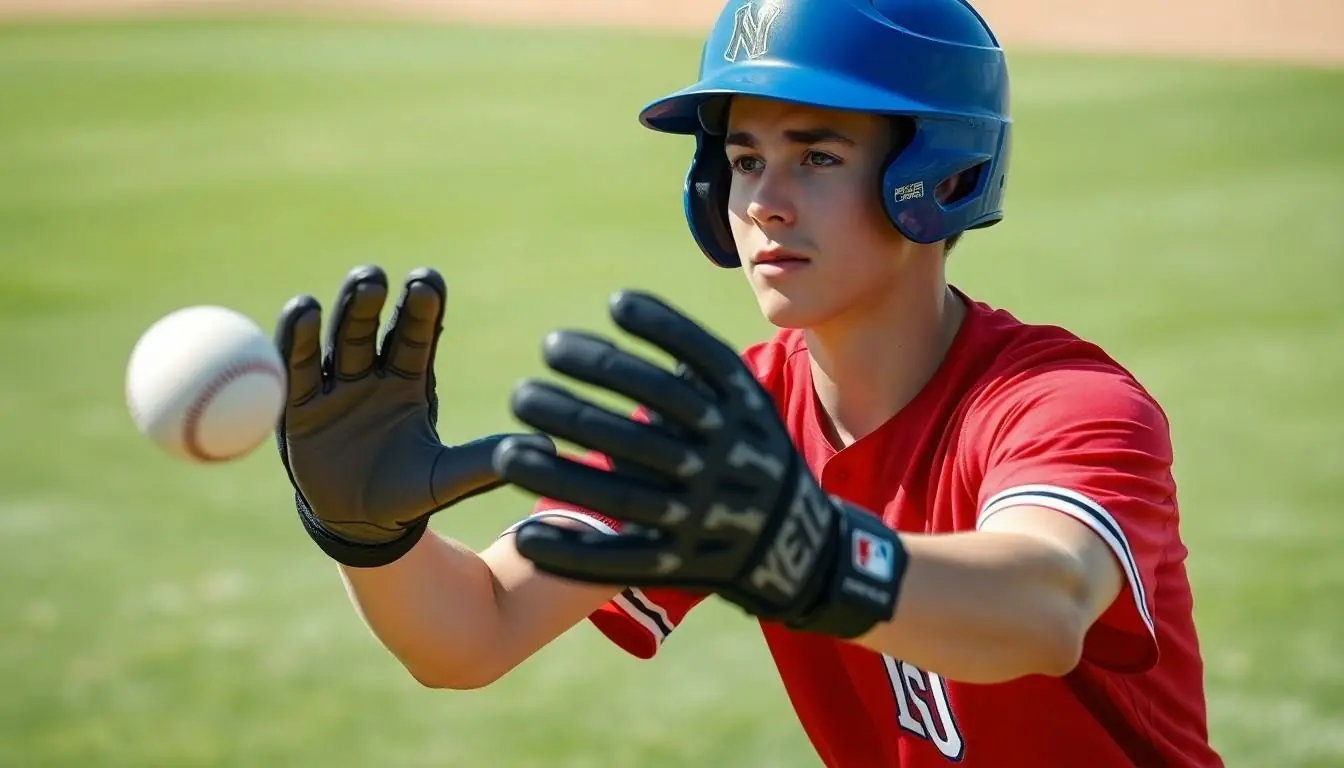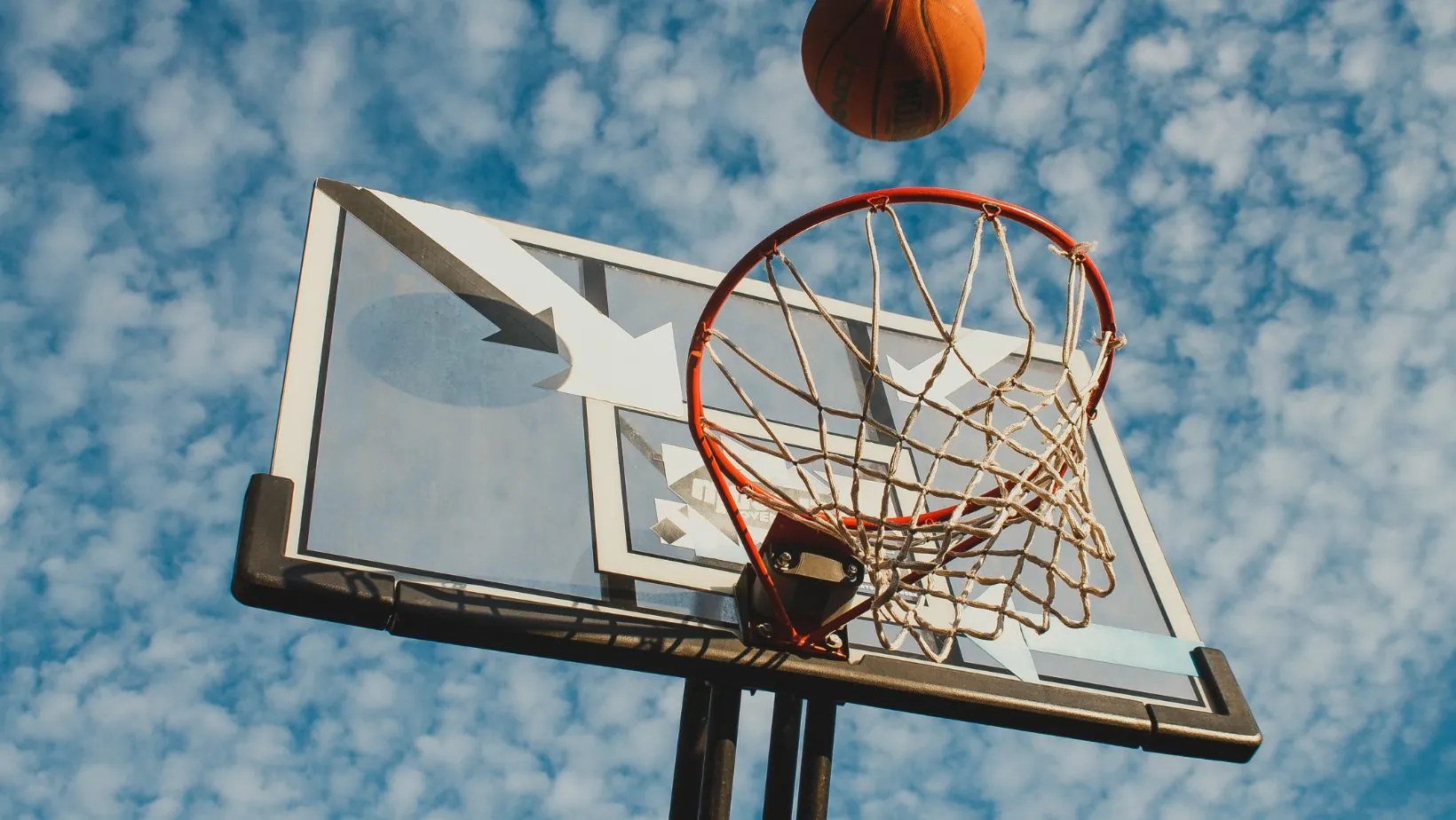Every baseball player knows that the right gear can make or break their game. Enter baseball training gloves—the unsung heroes of the diamond. These gloves aren’t just for show; they’re designed to elevate performance, improve grip, and turn even the most awkward catches into highlight-reel moments. Who wouldn’t want to snag that fly ball like a pro?
Table of Contents
ToggleOverview of Baseball Training Gloves
Baseball training gloves serve a crucial function for players aiming to improve their skills. Designed specifically for training purposes, these gloves differ from game gloves in several aspects. Players benefit from a better grip with materials that enhance control. Comfort remains a priority, as these gloves feature soft padding and flexible designs.
In terms of size, training gloves typically range from 10 to 12 inches to accommodate players of various ages and skill levels. Lightweight designs allow for greater ease of movement during practice sessions, enabling consistent catching and throwing drills. Durability is another essential factor; many gloves use synthetic leather or leather construction for long-lasting use.
The unique design characteristics of baseball training gloves also provide support for players learning new techniques. Reinforced pockets help with ball retention, making training sessions more effective. Some models even include adjustable wrist straps to ensure a secure fit, preventing distractions during gameplay.
Different brands, such as Rawlings and Wilson, offer a variety of training gloves tailored to specific player needs. Players can find options that suit both infield and outfield training, depending on their positions. Enhanced performance leads to improved confidence on the field as players practice with these specialized gloves.
Coaches often recommend incorporating baseball training gloves into regular training regimens to maximize skill development. By using these tools, athletes gain valuable experience in handling the ball, which translates well to competitive situations. Selecting the right glove directly impacts a player’s training results and overall performance during games.
Benefits of Using Baseball Training Gloves

Baseball training gloves offer numerous advantages that enhance a player’s performance and overall game experience. Key benefits include improved grip, better control over the ball, and heightened focus on technique during practice.
Improved Grip and Control
Improved grip significantly enhances a player’s ability to catch, throw, and field the ball. Specialized materials used in training gloves maximize traction, ensuring the glove clings securely to the ball with every catch. Players benefit from a controlled grip that helps them execute difficult catches and throws more effectively. Each glove’s design also supports hand positioning, which aids in maintaining control during gameplay. With better grip, athletes gain confidence to engage in challenging drills without fear of mishaps.
Enhanced Focus on Technique
Enhanced focus on technique helps players refine skills during practice sessions. Training gloves encourage a high level of hand-eye coordination by providing players with the right sensation when catching. As players feel the ball’s impact more distinctly, they can adjust their movements immediately. This feedback system allows for targeted practice on specific skills, such as catching angles and throwing accuracy. When players concentrate on proper positioning, they develop muscle memory that directly translates to improved performance in games.
Types of Baseball Training Gloves
Baseball training gloves come in various types designed to meet players’ specific needs. Understanding these differences aids in selecting the right glove for training.
Youth vs. Adult Gloves
Youth gloves typically measure between 10 to 11 inches, catering to smaller hands and developing skills. Soft materials offer flexibility, ensuring comfort for younger players. Conversely, adult gloves generally range from 11 to 12 inches, accommodating larger hands. These gloves emphasize durability and support during intense training sessions. Players of varying ages achieve optimal performance through gloves tailored to their size.
Specialized Training Gloves
Specialized training gloves focus on specific skills required for different positions. Infield gloves possess smaller pockets, enabling quicker ball transfers for swift plays. Outfield gloves feature larger pockets designed for catching fly balls with ease. Some gloves include fingerless designs to enhance grip, while others boast enhanced padding for additional protection. These variations address unique training needs, allowing players to focus on mastering their positions effectively.
Key Features to Look For
Selecting the right baseball training gloves involves examining several key features that contribute to performance and comfort.
Material Quality
Material quality greatly affects a glove’s durability and performance on the field. High-quality leather or synthetic materials tend to offer superior resistance against wear and tear. Gloves made from leather provide excellent break-in time and natural feel while yielding better grip. Conversely, synthetic gloves often weigh less, benefiting players looking for agility during training. Additionally, moisture-wicking linings enhance comfort by keeping hands dry, crucial for extended practice sessions. Opting for gloves with reinforced stitching also ensures longevity, particularly during rigorous drills.
Size and Fit
Size and fit play crucial roles in maximizing a player’s ability and comfort. Gloves ranging from 10 to 12 inches accommodate various hand sizes. A proper fit allows for optimal control and minimizes the risk of injury. Many gloves feature adjustable wrist straps, ensuring a secure fit without restriction. Trying on gloves before purchase helps identify the perfect size, enhancing overall performance. Players often prefer snug-fitting gloves, which provide better grip, while still allowing for flexibility in movement.
Top Baseball Training Gloves in the Market
A variety of baseball training gloves stand out for their unique features and benefits. Rawlings Youth Intruder Gloves measure 10 to 11 inches, designed for younger players focusing on comfort and flexibility. Wilson A2000 series offers adult options ranging from 11 to 12 inches, providing durability suitable for intense training.
Adidas Adizero gloves emphasize lightweight materials, allowing for easier movement during practices. Mizuno Prospect Gloves feature a unique toe guard, which helps with catching and reduces wear. Easton’s Professional Gloves incorporate moisture-wicking technology, ensuring comfort during long practice sessions.
Another recommended option is the Under Armour Resurgence, known for its fingerless design. This feature enhances grip, giving players added control during various drills. Players can also consider the Nokona alpha and classic models, which use high-quality leather for a natural feel.
Specific designs target particular positions. Infield gloves provide smaller pockets for quick ball transfers, while outfield gloves are larger, ideal for catching fly balls. Specialized padding exists to address protection, catering to players’ needs during training.
Consider functionality as a priority when choosing gloves. Spending time trying on different options can help identify the right size and fit. Adjustable wrist straps play a vital role, ensuring gloves stay secure during rigorous movements.
Feedback from players emphasizes the importance of using high-quality materials to improve performance. Investing in a well-designed glove contributes significantly to a player’s skill development and confidence on the field.
Baseball training gloves are indispensable for players aiming to enhance their skills and performance. With their focus on grip comfort and durability they serve as vital tools during practice sessions. The right glove not only boosts confidence but also allows athletes to master techniques that translate into game-day success.
Investing in a quality training glove tailored to individual needs can make a significant difference in overall performance. Whether it’s a youth glove designed for comfort or an adult glove built for durability players should prioritize fit and functionality. As they refine their skills through targeted practice the benefits of using the right training glove become clear on and off the field.




